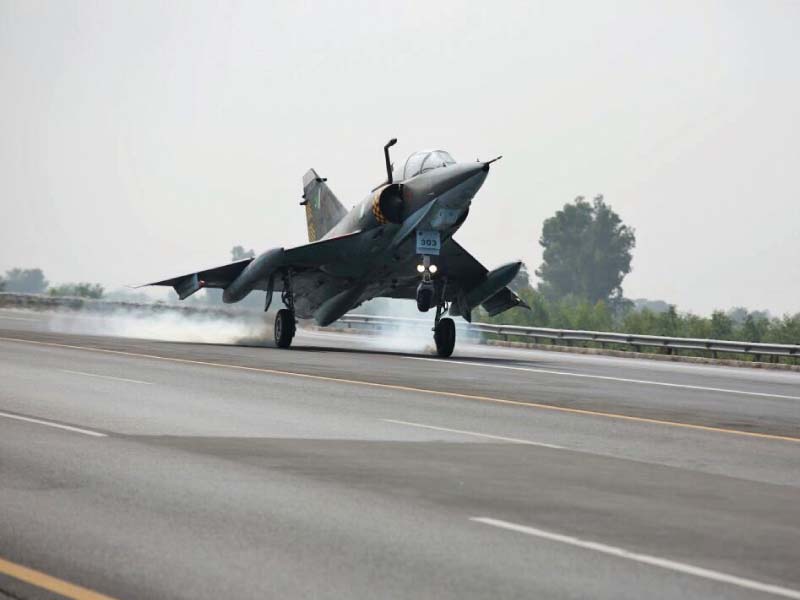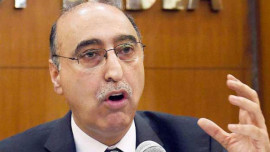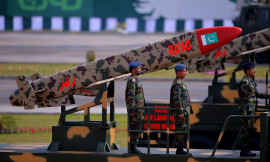
The sabre-rattling began after militants mounted a deadly attack on an Indian military base in Uri, in the disputed Kashmir state on Sunday. New Delhi jumped the gun, blamed Pakistan for the assault and started making menacing statements.
Indian army moves heavy artillery guns along LoC
Going a step further on Thursday, the Indian army moved heavy artillery to forward bases along the 778-kilometre Line of Control (LoC) in Kashmir. Indian military officials confirmed to BBC Urdu that large-calibre guns, including Bofors, have been deployed at forward positions in the region to target Pakistani defences. Indian military sources added they were not preparing for war but the latest exercises were carried out “to preempt any assault in future”.
“The army continues to upgrade its operational readiness all along the LoC, with redeployment of troops and some forward movement of ammunition and fuel dumps,” Times of India (ToI) newspaper reported.
Though officials in Islamabad don’t see an imminent threat of war, Pakistani fighter jets have been conducting high-profile landing and take-off exercises on motorways for the past two days. “The defenders of our skies in a state of constant readiness, Alhamdolillah. Our motorways are our runways,” Defence Minister Khawaja Asif wrote on his official Twitter handle.
Foreign Office spokesperson Nafees Zakaria played down the media hype about the ‘routine exercises’ but said the armed forces and the entire nation of Pakistan remain ready to defend country’s sovereignty and territorial integrity at all costs.
According to BBC Urdu, Indian Prime Minister Narendra Modi spent Thursday at a military operation room where he monitored the Indian army’s movement along the LoC.
Lahore-Islamabad motorway closed for ‘routine’ PAF drill amid India tension
“There have been other top-level meetings over the last two days, including with National Security Adviser Ajit Doval, to discuss the operational situation along the LoC, as well as the military options,” TOI quoted a source as saying.
Hawkish Indian officials have been talking about covert or overt strikes in Pakistan. And TOI reported that India’s options range from concentrated firepower assaults with 155mm artillery guns, Smerch rockets and BrahMos supersonic cruise missiles to ‘surgical air strikes’ by fighter jets to take out alleged terror camps through precision-guided munitions.
India has a history of knee-jerk reactions to every terrorist attack on its soil. In December 2001 when militants laid a siege to Indian parliament, New Delhi blamed Pakistan-based Lashkar-e-Taiba militant group and massed troops along the LoC in an operation, codenamed Parakram, triggering fears of an all-out war.
Notwithstanding India’s aggressive posturing, a strategic assessment of Pakistani security agencies says chances of military adventurism are thin. “Although a lot is being said in the Indian media, our assessment is that there is no indication as yet that India is planning any sort of attack against Pakistan,” a top military official, who was briefed about the latest assessment by intelligence agencies, told The Express Tribune.
Pakistani officials say the consequences of any form of attack from India could be far worse than people realise on both side of the border. “Despite jingoism and sabre-rattling, India will think twice before launching any attack against Pakistan,” the official added while speaking on the condition of anonymity.
India incapable of waging war on Pakistan, experts say
However, while India is thickening its aggressive posture along the LoC, Pakistan too has shored up its border defences, including reinforcing its artillery positions. The official who spoke to The Express Tribune made it clear that Pakistan’s armed forces were on ‘high alert’ to respond to any eventuality.
On Wednesday, authorities imposed ‘airspace restrictions’ and cancelled all flights to Gilgit-Baltistan. Sections of motorway near Peshawar and Lahore were also closed to traffic to allow Pakistan Air Force (PAF) fighter jets practice landing and take-off. On Thursday too, PAF closed Lahore-Peshawar motorway in what it said was routine training not related to heightened tension.
India Today picked a tweet of a Pakistani journalist to stir up war hysteria. “A journalist in Pakistan has tweeted about the presence of a group of fighter jets flying over Islamabad,” it reported. “Twitter has been flooded with many panic posts mentioning the presence on F-16 fighter jets roaring in the skies.”
Fear is such in India that the Western Naval Command sounded the highest state of alert along the Mumbai, Navi Mumbai, Thane and Raigad coasts in Maharashtra after reports of suspicious movement of an armed group in Uran.
A navy spokesperson said that keeping in mind the current situation, no alert can be taken lightly. “Our helicopters are making sorties at and around Uran,” he said.
Pakistan’s Permanent Representative to the UN Dr Maleeha Lodhi said on Thursday that Pakistan would not be drawn into the war talk. “India has been beating the war drum in response to the diplomatic pressure (on prevailing rights human situation in Kashmir). We don’t think any such threat of war is imminent. Any such notion between two nuclear powers will be irrational,” she told a private TV channel.
Dr Lodhi said Pakistan never desired to escalate the situation rather always desired to resolve the issues peacefully. She said as next step Pakistan would approach the members of the UN Security Council, though a dossier had already been presented to the UN Secretary General on Kashmir situation.
Published in The Express Tribune, September 23rd, 2016.












































COMMENTS (32)
Comments are moderated and generally will be posted if they are on-topic and not abusive.
For more information, please see our Comments FAQ